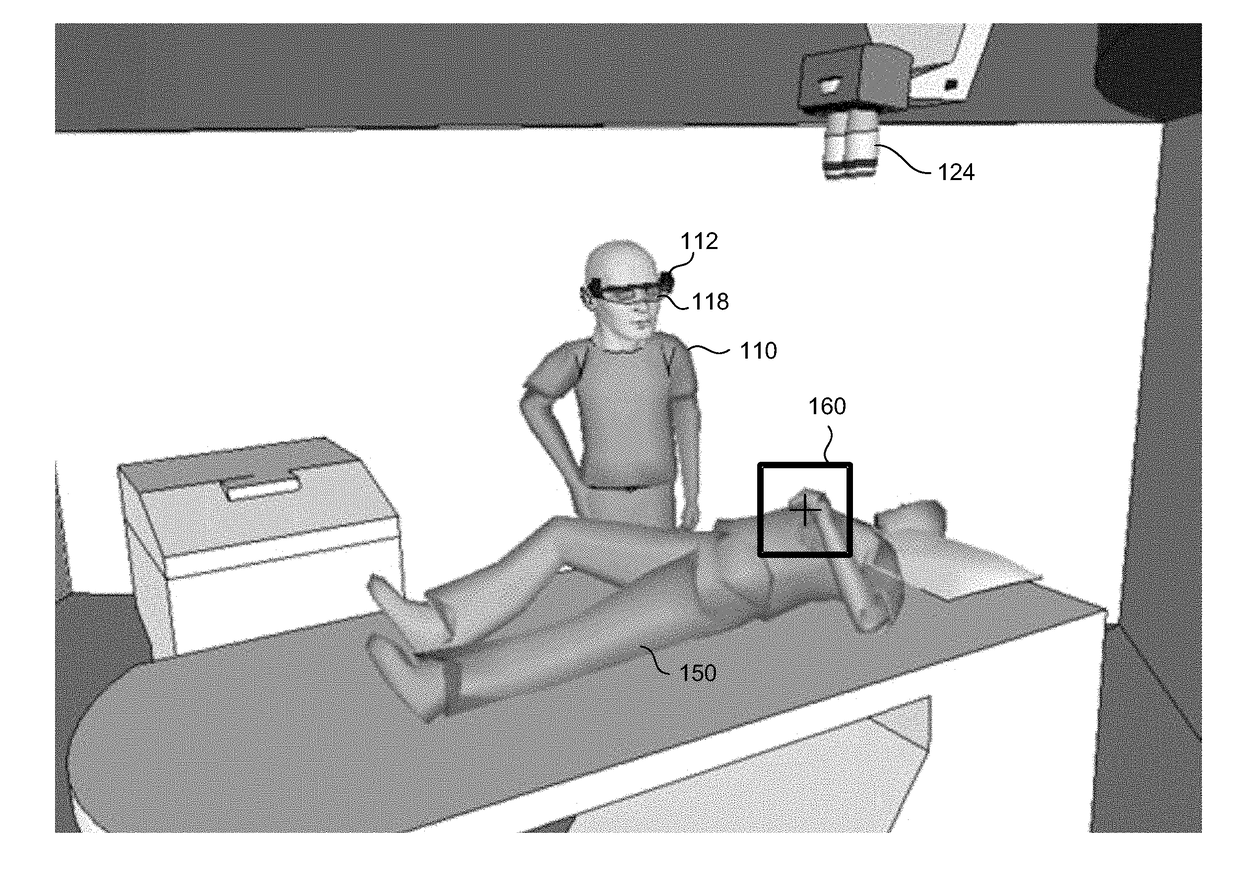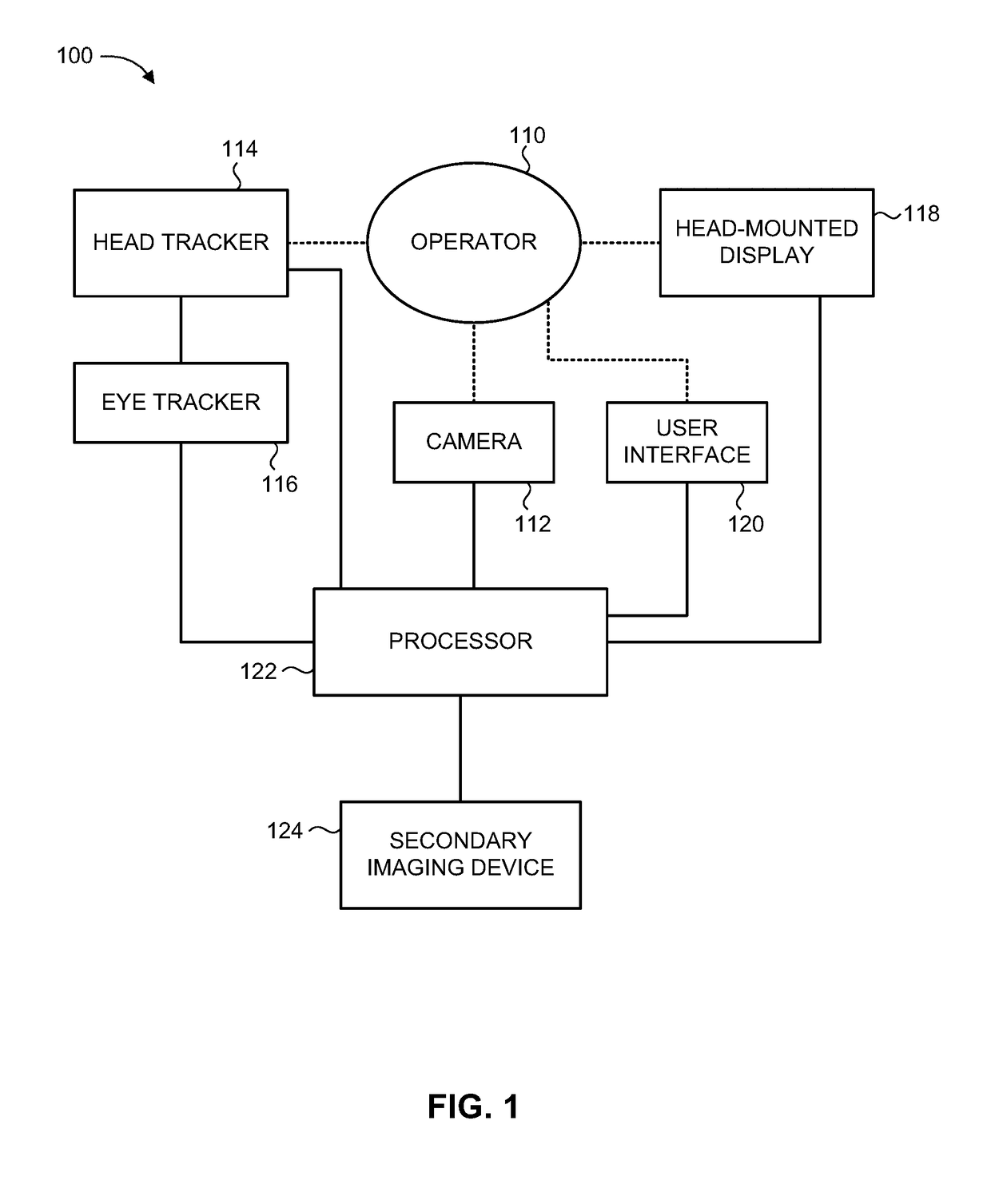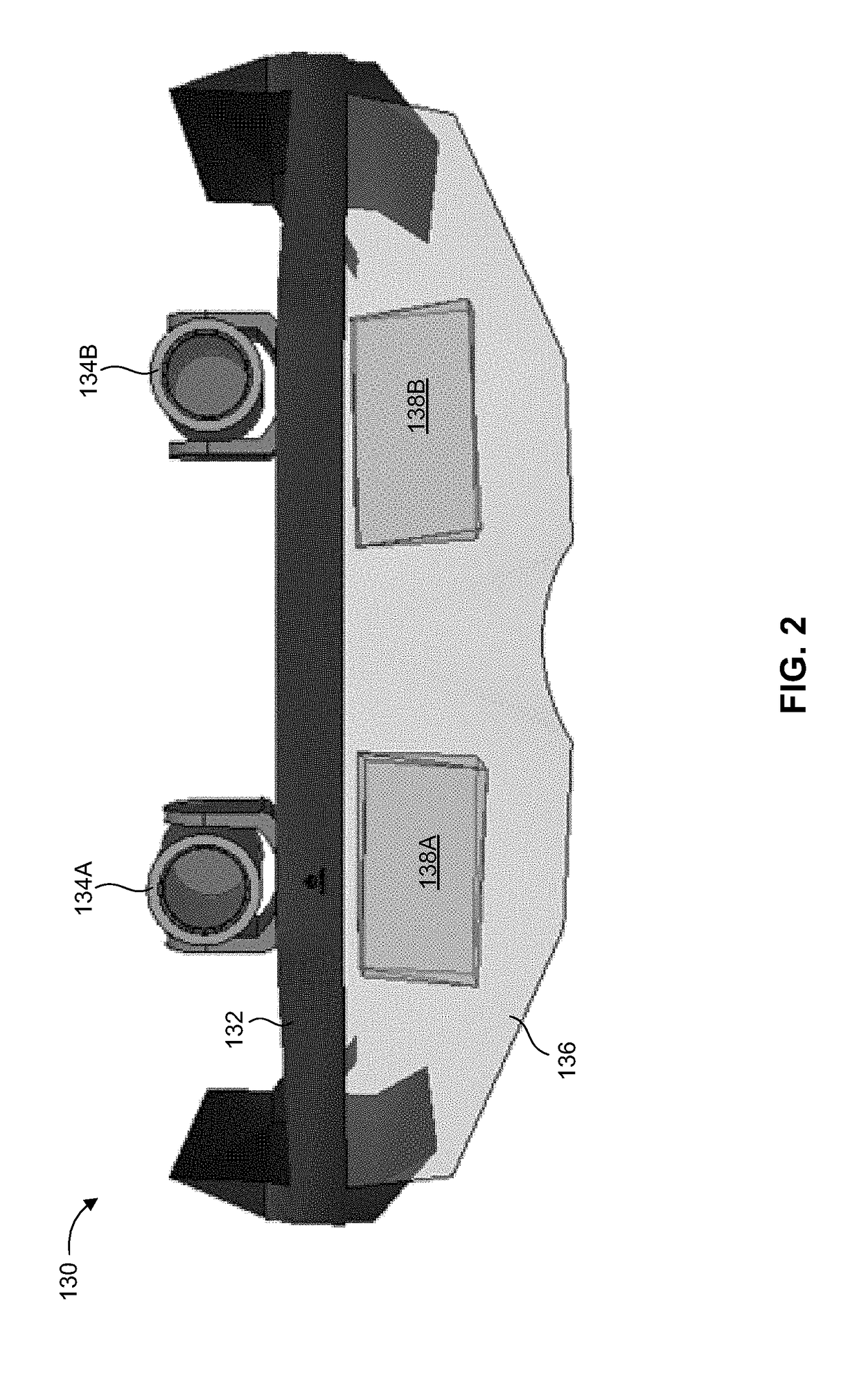Head-mounted displaying of magnified images locked on an object of interest
a technology of magnified images and objects, applied in the field of head-mounted displays, magnification optics, medical imaging, image processing, and display presentation, can solve the problems of obstructing the peripheral vision of the user, cumbersome handling of loupes, and obstructing the user's peripheral vision, so as to selectively reduce the transparency of at least a portion of the display area, increase or decrease the magnification factor of the displayed image, and increase the angular resolution
- Summary
- Abstract
- Description
- Claims
- Application Information
AI Technical Summary
Benefits of technology
Problems solved by technology
Method used
Image
Examples
Embodiment Construction
[0022]The present invention overcomes the disadvantages of the prior art by providing a system and method for displaying to a user a magnified image of a view seen through a head-mounted display (HMD), where the magnified image is based on an image captured by at least one head-mounted camera directed to a field of view conforming to the head direction or line-of-sight (LOS) of the user. The system may present a sequence of magnified image frames which remains locked on an object of interest viewable by the user, as determined in relation to the current user head direction or LOS. The image locking displays the object of interest in a pre-defined position on the display, regardless of the head movements of the user. The magnified image may also undergo image stabilization, such that a stabilized view of the object of interest is displayed to the user. The user may adaptively select relevant parameters and settings as required, such as designating a new object of interest, or adjusti...
PUM
 Login to View More
Login to View More Abstract
Description
Claims
Application Information
 Login to View More
Login to View More - R&D
- Intellectual Property
- Life Sciences
- Materials
- Tech Scout
- Unparalleled Data Quality
- Higher Quality Content
- 60% Fewer Hallucinations
Browse by: Latest US Patents, China's latest patents, Technical Efficacy Thesaurus, Application Domain, Technology Topic, Popular Technical Reports.
© 2025 PatSnap. All rights reserved.Legal|Privacy policy|Modern Slavery Act Transparency Statement|Sitemap|About US| Contact US: help@patsnap.com



